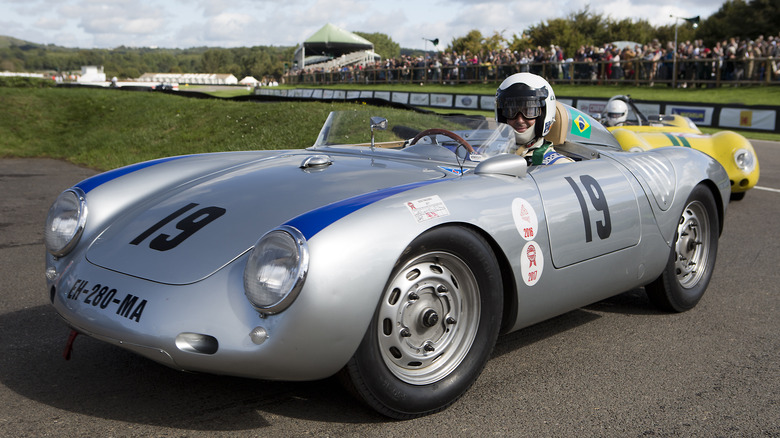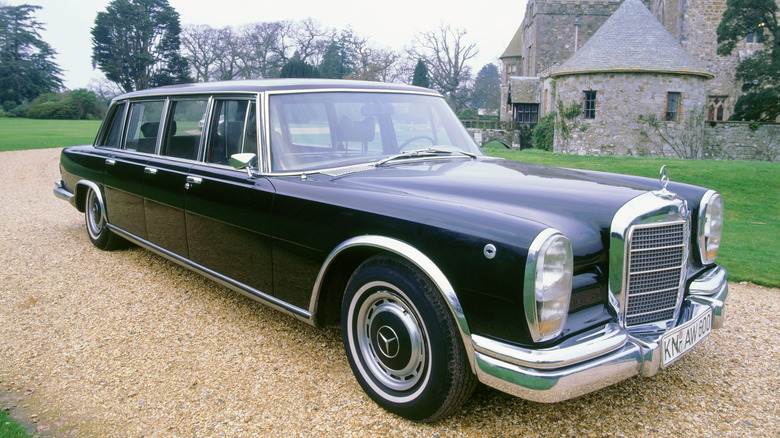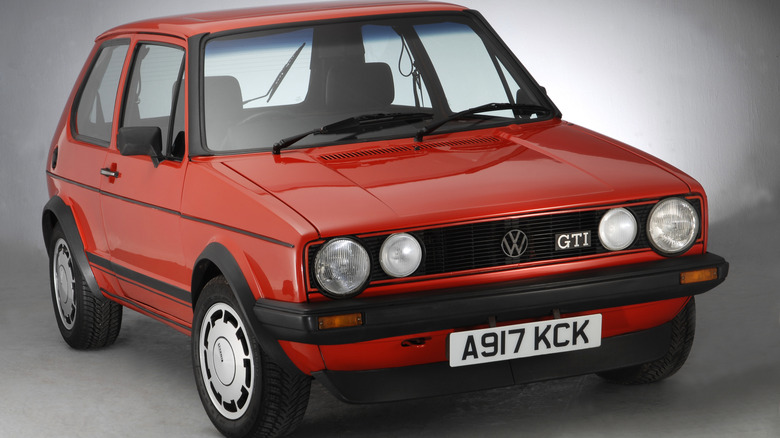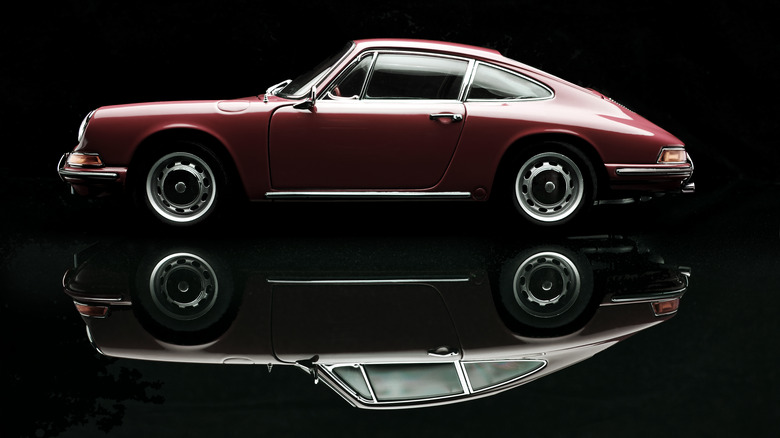From producing the first-ever automobile to giving us some of the most legendary internal combustion engine machines, Germany has the richest and most celebrated automotive industry. The country is still Europe’s biggest contributor to the automotive world, with Mercedes-Benz, BMW, Audi, and Volkswagen continuing to push the boundaries with new technologies and advanced engineering.
That was always the case with German cars. Breaking speed records, winning races, and just producing excellent automobiles have been the driving force for German automakers. As a result, these companies have given us some of the best sports cars, supercars, luxury vehicles, and economy cars in history. Put simply, there is no automotive category where Germans don’t participate.
In this article, we will celebrate all the great German cars throughout the nation’s automotive history. The focus will be on machines that changed the automotive landscape by pushing the boundaries on what is possible in a motorcar in their respective eras. All of these cars are also historically significant and have given direction to each particular brand that they still follow to this day.
Spanning almost a century, this list might also teach you about some cars you didn’t know existed, yet they are engineering marvels nonetheless.
Mercedes-Benz SSK/SSKL Roadster (1927 to 1933)
Mercedes-Benz produced the world’s first car and ever since it has been synonymous with advanced engineering and technology. In the 1920s, the company broke speed records with the SSK Roadster, a car so advanced its numbers look impressive even today. Designed by a certain Ferdinand Porsche, it was like the Bugatti Veyron of its era — a two-seater with grace, finesse, and speed no other car could match.
The SSK was first introduced in 1928 with a 7.1-liter inline-6 engine. The unit provided 140 hp (160 hp from 1929), with a supercharger to boost it to 200 hp. Thus, SSK drivers had two distinct driving mode options — a feature now standard in every modern car today. Paired with a four-speed manual, the SSK could reach 115 mph (185 km/h), which was unthinkable for the era. More powerful SSK Roadsters were also offered; the 170/225-hp and 180/250-hp versions reached 119 mph (192 km/h).
However, these «pedestrian» models only served as a teaser while Mercedes-Benz worked on a much more powerful sports car: the 1931 SSKL. This was the ultimate version, with 240 hp standard and 300 hp after engaging the supercharger. The SSKL was not only more powerful, but it was also more than 440 pounds (220 kilograms) lighter than the SSK — it clocked in just over 3,300 pounds (1,500 kilograms)! As a result, it could reach an unprecedented 146 mph (235 km/h), making it by far the fastest car in the 1920s and 1930s.
Mercedes-Benz 300 SL Gullwing (1954 to 1963)
Mercedes-Benz was easily the most influential automaker before WWII, but even after Germany lost the war, the company continued with its engineering brilliance. The efforts to remain at the top culminated with the 1954 300 SL Gullwing — arguably the world’s first supercar. Mercedes-Benz took center stage at the 1954 International Motor Sports Show in New York with the futuristic Gullwing doors, but the 300 SL had much more to offer than just glitz.
Under its front bonnet, this beautiful sports car housed an industry-first, fuel-injected 3.0-liter inline-6 engine with a single overhead camshaft. This time, Mercedes-Benz went without a supercharger, which would’ve only added unnecessary weight and complexity. Despite that, the smooth-revving unit produced 215 hp, enough to propel the 300 SL to 161 mph with the highest-ratio 3.25:1 rear differential. As a result, Mercedes-Benz was again at the top, with the 300 SL being the fastest car of its era.
Apart from the advanced engine, the 300 SL Gullwing also featured a spaceframe chassis that only weighed 110 pounds while providing exceptional structural rigidity. The chassis design introduced very high and wide sills, which necessitated the winged doors. There was also a roadster version with regular doors — less eye-catching but perhaps even more elegant. Still, both versions are gorgeous and cost north of $1 million today — even a Hot Wheels 1: 64 scale model costs $12,000!
Porsche 550 Spyder (1953 to 1956)

Michael Cole/Getty Images
Before the arrival of the Porsche 550 Spyder, power was the main thing that characterized sports cars. Sure, manufacturers also employed weight-saving practices, but it was an afterthought. The 550 Spyder was built from the ground up to be hyper-lightweight. It featured a tiny, naturally aspirated 1.5-liter air-cooled engine, which is small even by today’s standards, let alone in 1953.
The 550 Spyder was easily the most sought-after road-legal racing car of the era. Named the giant killer, it had 95 race victories over 370 races, making it one of the most successful racecars in history. It achieved that level of prestige even though its numbers on paper were less than impressive — the 1.5-liter unit made only 135 hp in its final iteration.
This was Ferdinand Porsche’s first standalone race car after he worked for Mercedes-Benz and Auto Union (later Audi). Thus, it was his finest automobile to date, with an aerodynamic body and an astonishing 1,300 pounds (590 kilograms) curb weight. As a result, this small roadster could reach 150 mph (240 km/h) — no small feat considering the engine displacement. Moreover, the 550 Spyder had a tubular spaceframe chassis, which provided exceptional body rigidity and a mid-engine layout for balanced handling.
The 550 Spyder is also infamous for being the car James Dean drove when he crashed on the way to a race meeting and lost his life. This ended the actor’s career prematurely but inadvertently added to the 550 Spyder’s fame.
Mercedes-Benz 600 (1963 to 1981)

Heritage Images/Getty Images
If you think of the ultimate luxury car, it probably has a sedan shape, a long wheelbase, a lot of space inside, great materials, and all the technological wizardry you could imagine. Well, if one particular vehicle comes closest to being the supreme opulence machine, it’s the «Grand Mercedes» 600, a car that revolutionized luxury. This was a car so advanced and sophisticated that the automaker couldn’t replicate many of its features for years to come. It was simply too expensive to do that.
Launched in 1963 when Mercedes-Benz was flying high, the 600 was a testament to German engineering superiority. Its most prestigious feature was undoubtedly the hydraulic system that powered almost everything inside— seriously, it powered the 600’s comfort-closing doors, sliding sunroof, windows, curtains, boot, front and rear seats, ventilation flaps, front and rear seat adjustments, and parking brake release. Mercedes-Benz decided to use hydraulics to power all these features because it was more luxurious, as pressurized fluid is silent, compared to loud electric motors. Leaders and dictators of the era must have had a great time riding in the 600!
But Mercedes-Benz didn’t stop there — the 600 also had advanced pneumatic self-leveling suspension, which provided the smoothest ride possible and excellent body control in the corners. Furthermore, the 247-hp, 6.3-liter V8 engine with Bosch fuel injection propelled this luxury barge to 62 mph (100 km/h) in 9.7 seconds and up to 127 mph (204 km/h) — impressive when you consider it weighed 5,456 pounds (2,475 kilograms)!
Volkswagen Golf GTI MK1 (1976 to 1983)

Heritage Images/Getty Images
The Golf GTI might not have been the first hot hatch, but it pushed the category into the mainstream. It also fulfilled the dreams of car enthusiasts across the world, providing driving thrills at an affordable price. Did we mention that it was also fairly reliable and cheap to run? The first Golf GTI was the real deal — a truly accessible, fun-to-drive machine. It’s no coincidence VW sold 460,000 first-gen models!
The first-gen GTI weighed less than a battery pack in a modern EV, tipping the scales at just 1,785 pounds (810 kilograms). Moreover, it sat 0.8 inches (20 mm) closer to the ground than the regular Golf and featured improved springs and dampers for flatter cornering. As a result, it was very agile in the corners, despite being a front-wheel-drive machine.
The Golf GTI MK1 was also quick in a straight line — at least for the era. The naturally aspirated 1.6-liter engine made 109 hp, allowing it to reach 60 mph in just 9 seconds. In 1982, VW put a larger 1.8-liter motor producing 110 hp and more torque at 112 lb-ft vs 103 lb-ft. As a result, the improved Golf GTI 1.8 could reach 60 mph in just 8.2 seconds. However, both versions are a blast to drive even today, despite them being the slowest of any Volkswagen Golf GTI generation.
Audi Sport Quattro (1984 to 1987)
Audi would not have been the brand it is today without the Quattro AWD system. The company built all its models to cater specifically to this drivetrain, unlike the RWD platforms of Mercedes-Benz and BMW. And it all started with the Audi Sport Quattro rally homologation special — the most iconic rally car of all time. From dominating the Group B rally championship to breaking records at Pikes Peak, the Quattro coupe showed that all-wheel-drive has a place in rally racing — not just in off-roading.
The road-going Sport Quattro that Audi had to build to compete is a legend in its own right. Angry-looking, with wide wheel arches and a comically short 86.77-inch wheelbase, the Sport Quattro is a sight to behold. Audi engineers opted for a shorter wheelbase for weight-saving reasons, with the coupe tipping the scales at 2,862 pounds (1,298 kilograms) — not bad considering the Quattro AWD hardware on board.
Meanwhile, sitting in front of the front axle was a 2.1-liter turbocharged inline-5 unit producing 302 hp and meaty 258 lb-ft of torque. The engine position made the Sport Quattro quite front-heavy, but the all-wheel-drive system made sure it was easy to drive. Crucially, it launched the Sport Quattro to 60 mph in just 4.8 seconds and up to 155 mph (250 km/h). This was ahead of its time for 1984, especially considering the Sport Quattro only came with a five-speed manual — a dual-clutch automatic would’ve cut a few more tenths off the time.
Porsche 959 (1987 to 1993)
While the Ferrari F40 might be the more sought-after supercar from the late 1980s/early 1990s, the Porsche 959 paved the way for more civilized yet still very capable supercars. It was just as much of a game-changer for supercars as the Audi Sport Quattro was for rally homologation specials. Notably, this was the first automobile with sequential turbocharging and active suspension while also incorporating all-wheel-drive for maximum traction.
However, it’s the numbers the 959 produced that broke the automotive world. The all-aluminum, flat-six 2.85-liter twin-turbo engine produced 444 hp, propelling the supercar to 60 mph in just 3.6 seconds, certainly aided by the excellent AWD traction. Still, the 959 won’t stop pushing past the 60 mph mark; it reaches 100 mph in 8.8 seconds and won’t stop until the needle shows 193 mph (310 km/h). Later, Porsche launched an even more bonkers «959 S» version with 515 hp that was also 220 pounds lighter. The 959 S reached a staggering 211 mph (339 km/h), a figure that is still impressive today.
Although crazy fast, the 959 was very accessible and easy to drive. The AWD system certainly made it more stable, but the aerodynamics also played a part in keeping it planted at higher velocities. Reviewers praised the smooth ride and quiet cabin, which was the total opposite of the Ferrari F40’s raw nature. Overall, it was a testament to Porsche’s engineering prowess — pretty nice, considering it was imagined as a Group B rally car initially.
Audi RS2 Avant (1994 to 1995)
The Sport Quattro might be Audi’s most significant car, but the RS2 definitely comes in close second. This supercar-beating wagon was the forebearer of Audi’s popular lineup of RS «Avant» station wagon models. However, the RS2 isn’t only special because it ignited a whole new category of fast station wagons — it’s also simply a brilliant machine.
Funnily enough, it was Porsche engineers who massaged the regular Audi 80 into an RS2. The performance wagon features wheels, tires, and brakes from the Porsche 968 Club Sport, a car designed for track enthusiasts. Moreover, Porsche upgraded the 2.2-liter inline-5 turbocharged engine with a large KKK turbocharger and an intercooler.
As a result, the powertrain produces 311 hp and 302 lb-ft of torque. The performance numbers are even more impressive — the RS2 takes only 5.4 seconds to reach 62 mph (100 km/h) and has a top speed of 163 mph (262 km/h). The acceleration time is equal to that of a 1994 Ferrari 348 Spider, which was unthinkable for a wagon in the 1990s. Heck, the RS2 was even faster to 30 mph than a McLaren F1, courtesy of the grippy Quattro drivetrain!
Like most turbocharged cars of yore — particularly ones with huge turbochargers — the RS2 has quite a sizeable turbo lag. Reviewers also said understeer ruined the fun, but let’s be honest: Even modern Audi performance cars suffer the same fate. Besides, the RS2 was more of a highway machine than a corner-cutting precision tool.
BMW E46 M3 CSL (2003 to 2004)
Unlike Audi, BMW always puts a lot more effort into the driving experience. They need to be fast, but they also need to provide balanced handling, sharp steering, and good throttle response. And the BMW E46 M3 CSL did all that almost perfectly. From the sonorous, naturally-aspirated inline-6 to the sharp and agile handling, this particular M3 will get you nearest to driving nirvana of (probably) any other German car in history.
The CSL was the improved, lightweight edition of the standard (already tremendous) E46 M3. It knocked 242.5 pounds (110 kilograms) off the regular model — without even losing the rear seats! This was the result of painstakingly cutting the weight on any part possible. The M3 CSL was even the first BMW with a carbon-fiber roof, something way more exotic in the early 2000s than it is today.
However, the car’s inline-6 masterpiece steals the show. In the M3 CSL, the 3.2-liter unit produces 355 hp @7,900 rpm and 272 lb-ft of torque, enough for a 0-62 mph acceleration time of just 4.9 seconds. Moreover, the sound it produced is probably one of the best in the automotive history. Angry and with racecar tonality, the M3 CSL engine still sends shivers down your spine.
It’s a shame that BMW went with a slow and clunky robotized SMG transmission for the CSL, as it takes away from the experience. Do a manual swap, though, and the E46 M3 CSL will become the culmination of driving excellence.
Porsche 911

Simonbradfield/Getty Images
Did you think we’d forget the 911? Of course not! The only difficulty was choosing the best generation, which is and will remain a point of debate for years to come. Some prefer the old, simple, air-cooled machines, while others prefer the tremendous performance potential of the water-cooled 911s. For this article, we decided to go with the 911 as an idea, an evolving concept that continues to give birth to new driving enthusiasts worldwide. Of course, we also have a list of every 911 generation, ranked from worst to best.
Whichever 911 is your favorite, one thing is certain: This is the quintessential sports car. It’s the sports car others have always looked up to and one that can satisfy almost every driver. Want a turbo that rivals a Tesla Plaid in a straight line? There is the 911 Turbo S for that. Want the full racecar experience? Porsche has the 911 GT3 RS to fulfill your Max Verstappen dreams. And there are numerous versions in between those two, each catering to a different type of buyer.
However, it wasn’t always like that. The 911 concept with the engine sitting behind the back axle has created drivability problems in the past. Older 911s are a handful to drive, with almost non-existent front-end grip. Porsche steadily upgraded the 911 by meticulously re-engineering every part to improve the formula over the years. Thus, the 911 has not only become an archetypal sports car, but it also best represents German engineering progress!